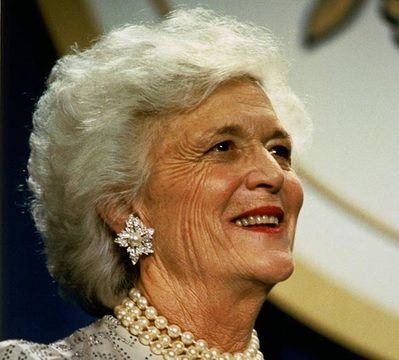Former First Lady Barbara Bush, the wife of former President George H.W. Bush and the mother of former President George W. Bush, passed away at age of 92 on April 18, 2018 after suffering from congestive heart failure and chronic obstructive pulmonary disease, according to Bush family spokesman Jim McGrath.
Her death, however, has brought attention to end-of-life care that often follows illnesses or long-term care situations. In a public statement, the family said she decided “not to seek additional medical treatment and will focus on comfort care.” This comfort care, or hospice care, as brought front and center how to address end-of-life issues.
End-of Life Care as Important as Long-Term Care
There has been a national effort to define and document patients’ wishes, and consider alternatives, before they are placed on what has been described as a “conveyor belt” of costly medical interventions aimed at prolonging life. Often, this end-of-life care comes after years of long-term care services and supports. Unlike long-term care, where a person and still enjoy a good quality of care, end-of-life can be very costly in addition to prolonging suffering from an illness.
Ellen Goodman, co-founder of the Conversation Project, which encourages families to discuss and document their end-of-life preferences, applauded the Bush family announcement.
“It sounds like this forthright, outspoken woman has made her wishes known and the family is standing by her,” Goodman said.
Technically, hospice and palliative care are different, but they are both considered “Comfort care.” Palliative care can begin at diagnosis of a life-ending health issue while hospice care is relegated to the last six months of life. Many people in either hospice or palliative care may have been receiving long-term care services as well prior.
Hospice Has Become a Norm at End of Life
The Hospice Foundation of America says that hospice is “a set of services that we all may need someday – if not for ourselves, for our parents. While death is not an option for any of us, we do have choices about the services we use at the end of life. Hospice is undoubtedly the best option in the last months of life because it offers a whole variety of benefits, not only to those of us who are dying but also to those we leave behind.”
They suggest 16 questions to ask when choosing a hospice. Click here to read.
Hospice is Comfort
Many experts say the word hospice can scare people. In recent years many health professions now use the word “comfort” to help people be more open and accepting of this end-of-life care.
Both palliative and hospice are an attempt to manage pain and symptoms. In a palliative care situation, the person is getting the support that might be provided while the person is receiving aggressive treatments.
The National Institute on Aging says palliative care can be a resource for anyone living with a serious illness, such as heart failure, chronic obstructive pulmonary disease, cancer, dementia, Parkinson’s disease, and many others. Palliative care can be helpful at any stage of illness and is best provided from the point of diagnosis.
In addition to improving quality of life and helping with symptoms, palliative care can help patients understand their choices for medical treatment. The organized services available through palliative care may be helpful to an older person having a lot of general discomfort and disability very late in life. Palliative care can be provided along with curative treatment and does not depend on prognosis.
As a person gets closer to the end of life, more people are choosing hospice care. Hospice can be provided in any setting—home, nursing home, assisted living facility, or inpatient hospital.
Hospice care brings together a team of people with specialized skills. The professionals with these skills include nurses, doctors, social workers, spiritual advisors, and trained volunteers. They work together with the individual who is dying, the caregiver, and/or the family to provide the medical, emotional, and spiritual support needed.
A hospice team member will visit regularly. Someone is always available by phone—24 hours a day, 7 days a week.
In either case, this type of care reduces the burdens on loved ones and brings everyone greater peace-of-mind.
Barbara Bush photo by David Valdez, White House Photo Office, Public Domain.


